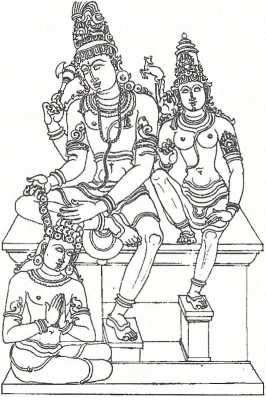Anugraha-murti
From Hindupedia, the Hindu Encyclopedia
By Swami Harshananda
Anugraha-murti literally means ‘icon showing favor’.
Temples and image worship has a long history in religion and culture. The three main cults of the religion are :
- Śaivism
- Śāktaism
- Vaiṣṇavism
These cults has given rise to a variety of icons during the course of its evolution. One set of such icons pertaining especially to Lord Śiva, showing benediction to his devotees is called ‘anugraha-murti.’
Iconographical works record six such anugrahamurtis, icons showing anugraha or benediction are :
- Caṇḍeśa - one of the attendants of Śiva
- Nandīśvara - Śiva’s mount
- Viṣṇu
- Vighneśvara or Gaṇeśa
- Arjuna - The Pāṇḍava hero
- Rāvaṇa - The demon king of Laṅkā
One hand of the image is usually kept on the head of the supplicant while one of the other hands exhibits abhayamudrā (protection-giving pose) or varadamudrā (boon- giving pose).
References[edit]
- The Concise Encyclopedia of Hinduism, Swami Harshananda, Ram Krishna Math, Bangalore

